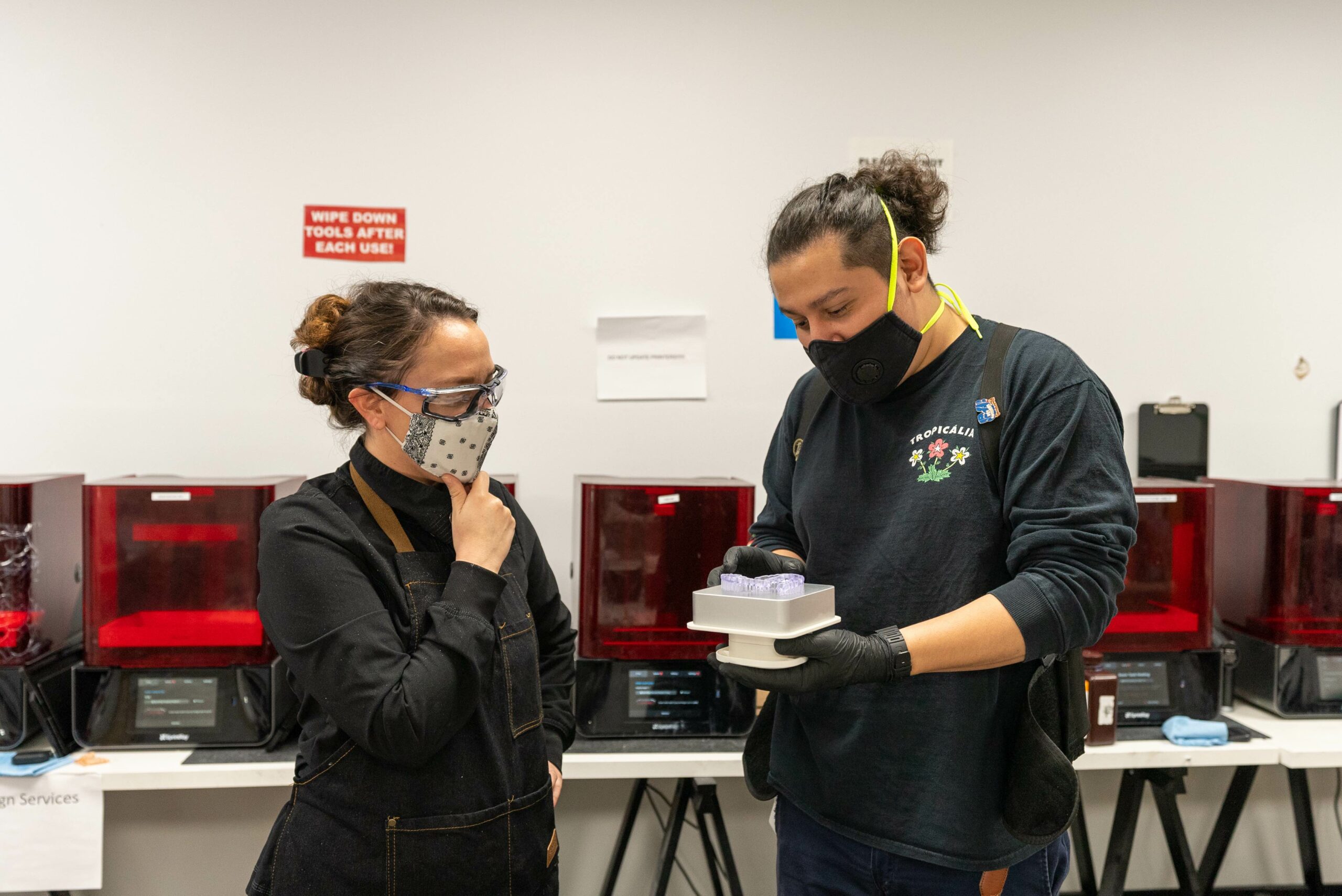SprintRay, a 3D printing company that caters to dental professionals, found themselves in a unique situation during the height of COVID-19 business disruption in 2020. Unlike many businesses, the Los Angeles-based company was not in survival mode. In fact, with fewer dentists seeing patients, many started exploring new dental technology leading to increased interest in SprintRay’s services.
When founder and CEO Amir Mansouri started the company in 2014, cultivating culture was easy. There’s a major difference between maintaining a company culture in a small, close-knit startup with five employees and a fast-growing, mature business with 60 employees and counting.

SprintRay began to develop a formal talent management strategy once it had around 20-30 employees, Mansouri said. With so few people, the talent management function mostly focused on compliance while Mansouri remained involved in the hiring process. He talked to every candidate and knew how they’d fit in with the overall company culture. Once the team grew to around 40 or 50 people, he realized he needed extra help.
“A good mentor of mine once said, ‘If you’re not evolving, you’re devolving.’ You must be proactive. That’s what sparked the whole idea of taking [culture] seriously,” Mansouri said.
Mansouri hired consultant and culture expert Ed Cohen to develop a culture-building strategy in June 2020 — something many companies chose not to do amid the pandemic. Mansouri said he did not want to delay something that could have a positive impact on employee morale and satisfaction, even if the timing might seem unusual.
The company was growing and it needed a well-defined culture to keep people working together toward the same goal, he said. If SprintRay did not start addressing culture now, it would only grow bad habits or behaviors that would take too long to fix.
“Once we saw the blooms of business getting back to normal, we continued to take all precautions to keep our people safe and we treated the pandemic as another noise in our business,” Mansouri said. “You have to focus on what matters: Make a great product; create a good workplace and environment for your team; and take care of customers.”
Six steps to build the best culture
Cohen developed a six-step culture-building process in 2000 and has been continually refining it. As a consultant, he had used the process across more than 200 companies throughout the years, personalizing it to fit the needs of the specific client. Soon after he partnered with SprintRay, the company hired him as their first-ever chief people officer and have been following the robust culture-building plan ever since.
The six steps to the process are:
1. Assess: Create a People Strategy Task Team to study what company culture looks like now and how it needs to grow.
2. Discover: Document desired culture and the behaviors that fit in it.
3. Articulate: Roll out behaviors and define boundaries.
4. Activate: Start living these behaviors and cultural values.
5. Integrate: Integrate behaviors and culture into company processes and further refine culture.
6. Transform: Measure business outcomes.
A cultural value of “teamwork,” might be supported by behaviors such as willingness to collaborate and ability to communicate clearly and respectfully. Boundaries refer to the limits of each behavior — the dos and don’ts of how people can express it.
“Having the behaviors alone is not enough. You also have to define what are the boundaries to success,” Cohen said, adding that teams of individuals across the company define the boundaries of each individual behavior.
Accidental culture vs. intentional culture

The first step of Cohen’s six-step process is observing and defining accidental culture versus intentional culture.
“You have two choices,” Cohen said. “You can define and create your culture or you can have your culture created for you. Culture happens no matter what you do. It either happens to you or you control what it does and what it looks like.”
If a company wants to change its culture, it must identify the culture that has developed naturally and decide which aspects to keep versus get rid of, Cohen said. SprintRay’s People Strategy Task Team would take the lead on this assignment. The team was made up of 11 individuals across departments and Mansouri was just one voice in the group.
At the time, SprintRay had about 60 employees; around 95 percent of them completed a detailed culture survey for the People Strategy Task Team. Employees gave feedback on what they believed were the good and bad parts of the spoken and unspoken parts of company’s culture. They were urged to be honest in their feedback.
With this feedback, the committee narrowed down employee responses to the top 28 most popular cultural norms. Everyone in the company submitted votes to decide on the top seven. In addition to the crowdsourced cultural values, Mansouri chose one belief to be on the list that didn’t make the final cut. This would be something that he, as the leader of SprintRay, believed was vital for the future of the company.
Finally, SprintRay created separate subcommittees for each of these nine cultural values. Each subcommittee created a list of dos and don’ts — behaviors that correlated with their value. The subcommittees were made up of employee volunteers.
The result of this process was the creation of SprintRay’s Nine Core Beliefs:
1. Customers come first: We put customers at the center of everything.
2. Better together: We are collaborative.
3. Empowered talent: We are inspired by our people and work to empower them and reward their meaningful contributions.
4. Nurturing environment: We create an environment that promotes employee well-being.
5. Solution driven: We believe every issue has a solution.
6. Highly adaptive: We have an agile mindset.
7. Committed: We act with integrity and recognize the importance of keeping commitments.
8. Diverse and open minded: We value and respect global diversity.
9. A team: We have fun, enjoy the journey and celebrate success as a team.
Core leadership values
Throughout this information-gathering process, Mansouri and Cohen came across one question posed by many individuals: “Is this a behavior or cultural value that we want everyone to share, or is this feedback for leadership?”
This led the executives to create SprintRay’s Leadership Principals — six behaviors that employees found important for leaders to demonstrate.
1. Enterprise leaders: Leaders speak with one voice; they recognize that “nobody wins unless everybody wins.”
2. Role models: Leaders model the way for our culture and principles.
3. Connected to the front line: Leaders stay connected to the front lines by keeping our customers at the center of everything we do.
4. Transparent communication: Leaders regularly communicate clear and concise information.
5. Grow leaders: Leaders grow more leaders including having a solid succession plan.
6. Owner’s mindset: Leaders are obsessed with speed and quality and eliminate barriers that get in the way of achieving goals.
The process taught Mansouri insights about the type of communication employees wanted from the leadership team, he said. He learned his workforce wanted more clarity on what direction the company was going in, especially in the uncertain economic times surrounding COVID-19.
The future of SprintRay

The culture-building initiative kept employees’ energy high. “During a time when everyone was stressed out, they saw that the company was doing things to improve their life,” Cohen said. “The people strategy has resulted not only in these behaviors being defined, but we’ve also totally revised and transformed our leave policies, our benefits policies [and] our wellness program. We’re in a war for talent. You have to get creative to excite and motivate people to stay.”
Even after the process technically ended in February 2021, Cohen and Mansouri say their culture-building strategy is ongoing. As the company grows, the culture will grow with it, especially as new people join the company and bring their own cultural flavor to the mix.
Mansouri observed early in the pandemic that many talented people were being laid off and furloughed from their companies. With SprintRay in a position to grow its workforce, Mansouri was able to hire employees and leaders from organizations including Disney and competing dental companies. These employees brought their own cultural flair to SprintRay and impacted the conversations around company culture.
Maintaining a consistent culture becomes more challenging as a company grows and hires more employees. There are more people with their own personalities, team dynamics and experiences. To dull the shock that comes from quick growth, the idea of the “SprintRay 500” came into play. The principle aims to help SprintRay behave like a 500-person company even when it has fewer than 100 employees. By the same logic, once the company has several hundred employees, it will switch to the “SprintRay 1,000” and behave like a 1,000-person company. And once it has almost a thousand employees, it will launch the “SprintRay 2,500.”
“The real project will be, how do we continue to build infrastructure?” Cohen said. “This is unique because most companies let their infrastructure lag behind the rest of the growth of the company. But Amir and the rest of the executives in the company recognize that’s not healthy if you want to sustain your organization and continue to grow.”












